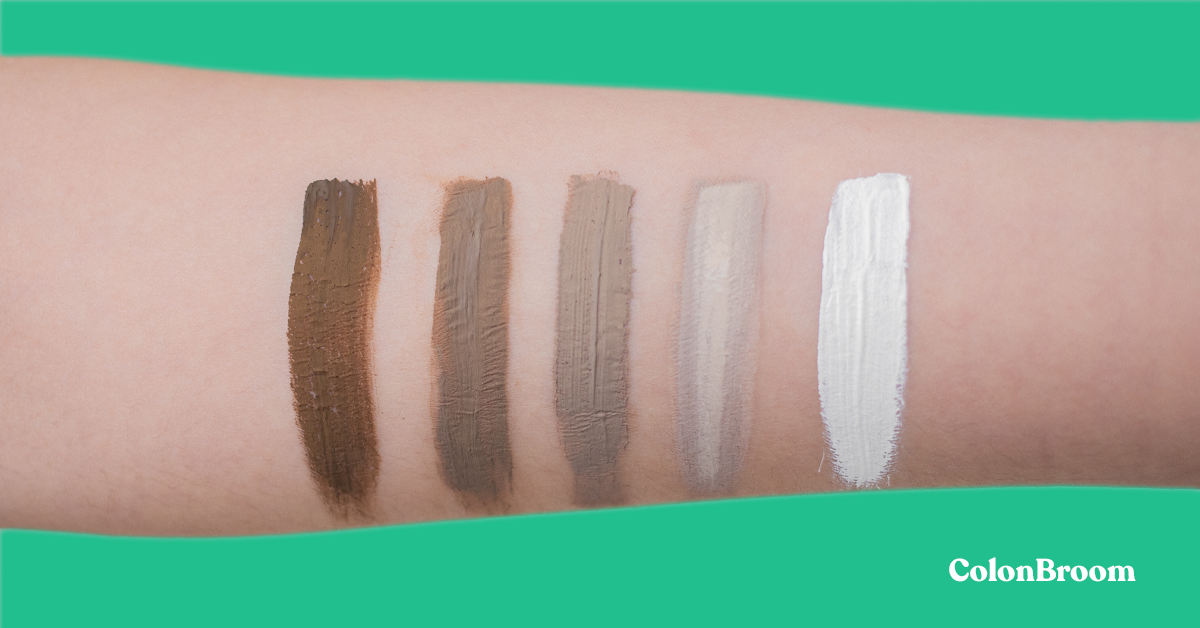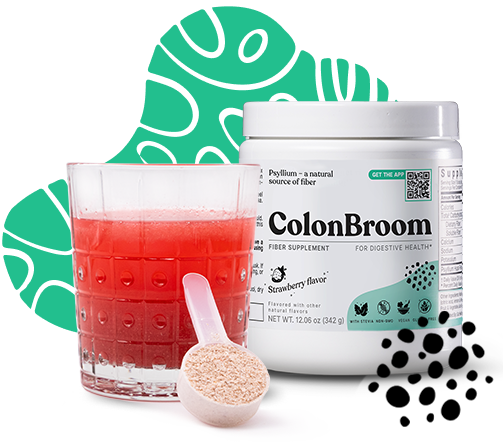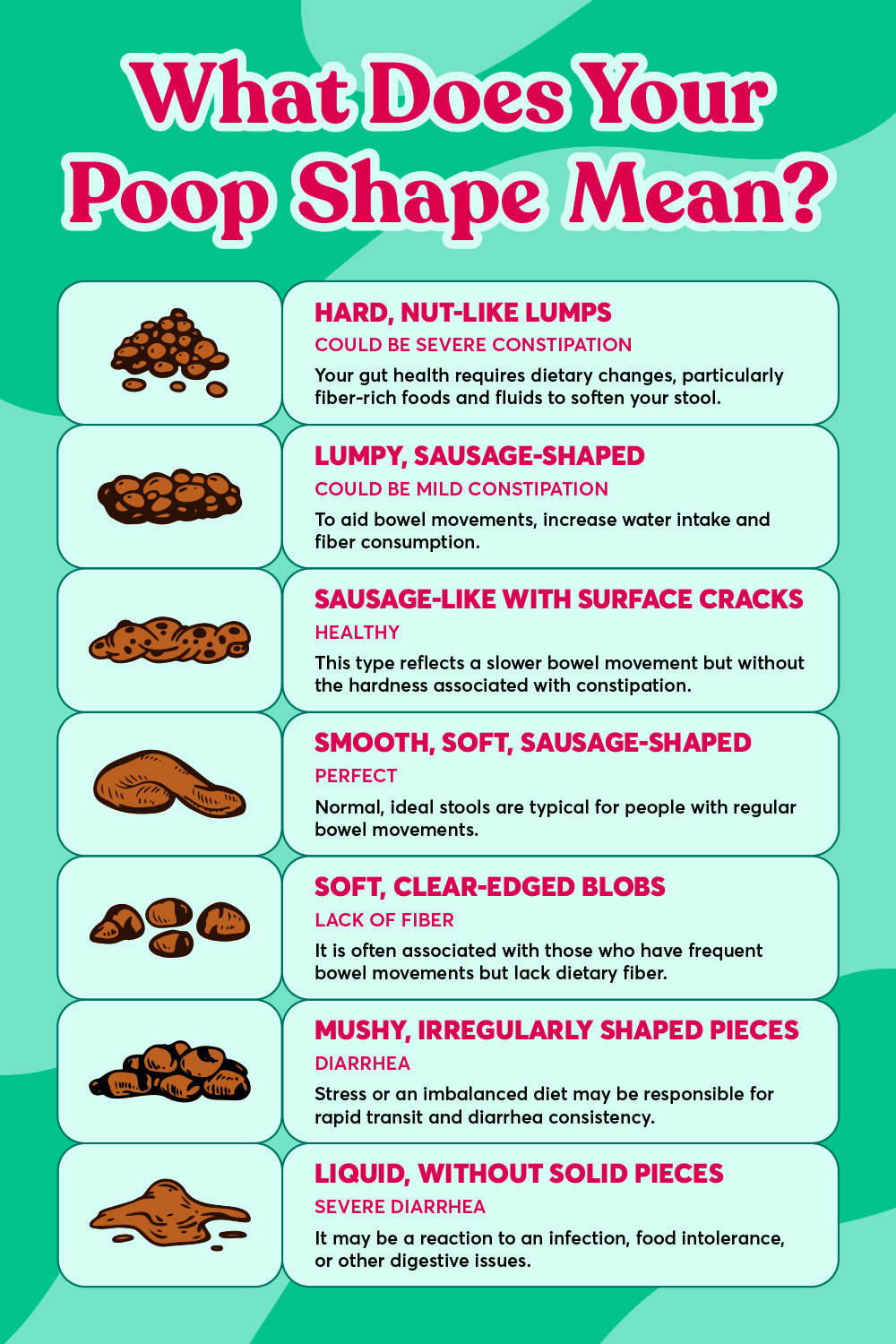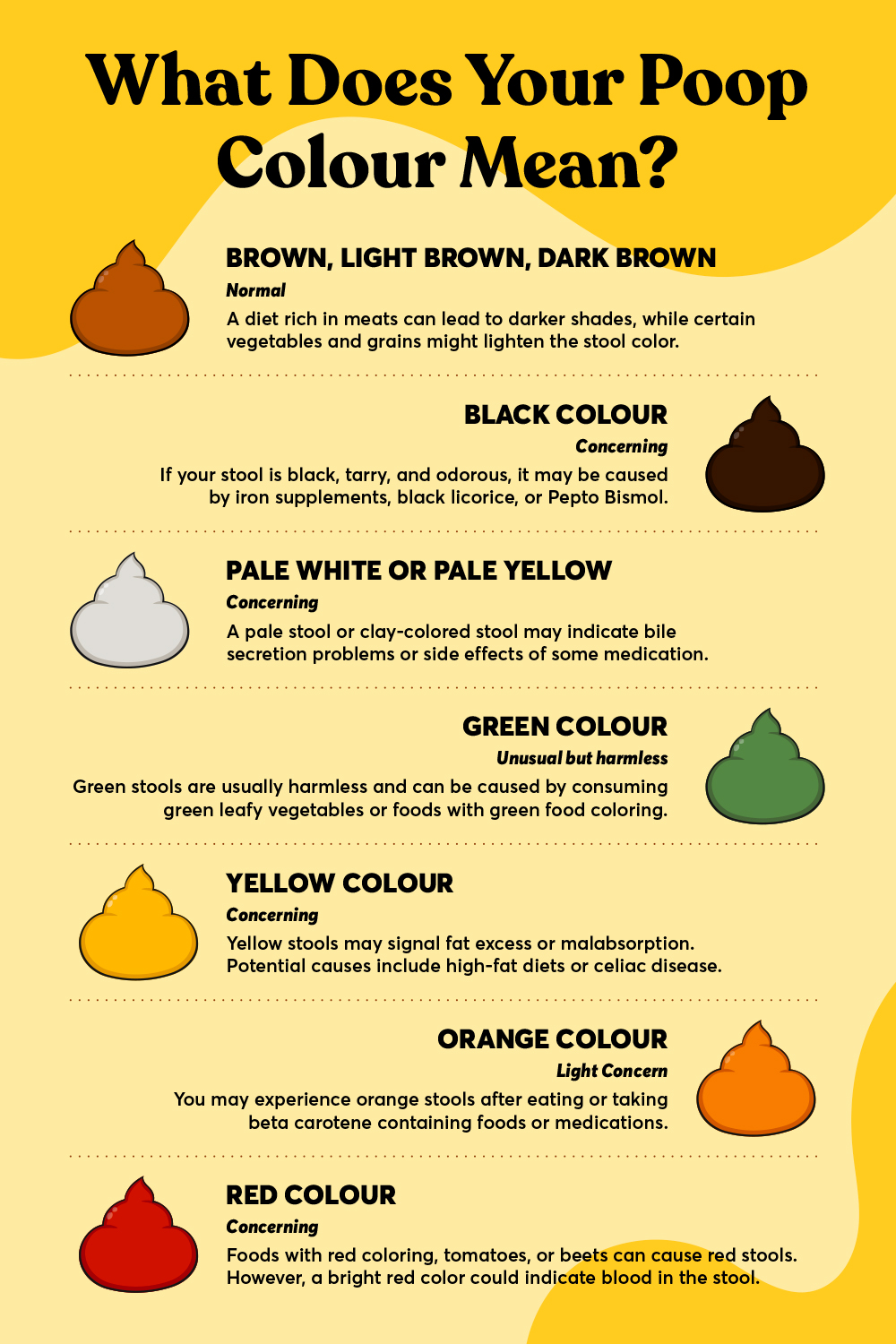What does the color of your poop reveal about your health? It’s a question we often overlook, but it holds significant insights. From stool color variations like green stool, yellow stool, or even black stool to texture differences, our bowel movements tell a story about our internal well-being.
This guide delves into the meaning behind poop color and other characteristics, bridging the gap between everyday observations and medical knowledge. Whether it’s a temporary change due to diet or an indication of a condition like inflammatory bowel disease or celiac disease, understanding the meaning of your poop color is vital to maintaining good health.
Let’s embark on this enlightening journey through the colorful world of stools, decoding what they indicate about our digestion and overall health.

Contents
Your Stool Color and Its Health Significance

The color of your stool offers vital clues about the health of your digestive system. Typically, stool color ranges within shades of brown, influenced primarily by bile, a fluid produced by the liver and essential for digestive processes.
However, changes in stool color can sometimes reveal crucial information about your body’s internal functioning. While dietary choices are common influences (foods and beverages consumed can alter the hue of your stool), color variations can also indicate different health conditions, making it essential to pay attention to any significant and persistent changes.
In assessing your health through stool color, it’s essential to consider factors beyond just the food you consume. The body’s ability to digest and absorb nutrients effectively, the efficient functioning of the liver, and the health of the gastrointestinal tract all play a part in determining stool color.
For instance, a consistent light yellow stool or clay-colored stool could indicate a potential bile duct blockage, while green stools might suggest that the stool passes through digestion too quickly. Understanding these nuances helps identify when a change in stool color is a harmless dietary effect or a sign to seek medical attention.
The Spectrum of Poop Color Meaning

Each of these colors provides significant information about your digestive health. Understanding them helps in determining when dietary effects are at play and when there might be a more severe issue that requires medical treatment:
Brown, light, and dark brown poop
- Indicates. The most common stool color, varying shades of brown, is typical and healthy, reflecting normal bile production and breakdown.
- Potential causes. Diet greatly influences these hues. A diet rich in meats can lead to darker shades, while certain vegetables and grains might lighten the stool color.
- Warning signs. Consistently very dark brown or black stools might be a sign of upper gastrointestinal bleeding or could indicate a need for dietary changes.
Black poop color
- Indicates. Black stool, especially if it’s tarry and has a strong odor, can cause concern.
- Potential causes. It can result from consuming iron supplements, black licorice, or Pepto Bismol. However, it might also indicate bleeding in the upper digestive tract.
- Warnings signs. If not linked to food or medication, black tarry stool can signal internal bleeding and require immediate medical attention.
Pale white or pale yellow poop
- Indicates. Pale stool or clay-colored stools are unusual and might indicate a problem with bile secretion.
- Potential causes. Issues with the bile ducts or liver disease can lead to lighter-colored stools. Certain medications might also cause this change.
- Warning signs. Persistently pale stool could suggest a serious medical condition affecting the liver or gallbladder and should be medically reviewed.
Green poop color
- Indicates. Green stools are often harmless and can occur when stool passes quickly through the digestive tract.
- Potential causes. Eating a lot of green leafy vegetables or foods with green food coloring can change the poop color to green.
- Warning signs. If accompanied by diarrhea or other symptoms, it may indicate a gastrointestinal infection or other digestive system issues.

Yellow poop color
- Indicates. Yellow stools may indicate excess fat in the stool or a malabsorption issue.
- Potential causes. A diet high in fats or a condition like celiac disease can lead to yellow stools.
- Warning signs. Greasy, foul-smelling yellow poop can be a sign of a malabsorption disorder, like a pancreatic or liver condition.
Orange poop color
- Indicates. Orange stools can occur due to certain foods or medications.
- Potential causes. Consuming foods with beta-carotene (like carrots) or medications with aluminum hydroxide can lead to orange-colored stools.
- Warning signs. Persistent orange stool color without a clear dietary cause might warrant a doctor’s visit.
Red poop color
- Indicates. Red stools can be alarming as they may indicate bleeding.
- Potential causes. Eating foods with red food coloring, tomatoes, or beets can result in red stools. However, bright red blood in the stool may suggest lower gastrointestinal bleeding.
- Warning signs. Presence of bright red or maroon-colored blood in stool should be immediately addressed with a healthcare provider.
What Are The Different Types of Poop?
The type and shape of your poop can offer valuable insights into your overall health and digestive system function. Here’s a breakdown of the various stool types and what they might indicate:
- Hard, nut-like lumps. This type signifies severe constipation. It indicates a need for dietary changes for your gut health, particularly increasing fiber-rich foods and fluids to soften the stool.
- Lumpy, sausage-shaped stools. Suggesting mild constipation, this form might require a boost in water intake and dietary fiber to aid bowel movements.
- Sausage-like with surface cracks. Generally considered healthy, this form reflects a slower bowel movement but without the hardness associated with constipation.
- Smooth, soft, sausage-shaped stools. Representing the ideal, normal stools, this type is typical for individuals with regular bowel movements.
- Soft, clear-edged blobs. Often seen in those with more frequent bowel movements, this type can indicate a lack of dietary fiber.
- Mushy, irregularly shaped pieces. This suggests rapid transit and is nearing a diarrhea consistency, potentially caused by increased stress or a dietary imbalance.
- Liquid, without solid pieces. Characterizing diarrhea, this type indicates that the digestive tract is expelling irritants and could be a reaction to infection, food intolerance, or other digestive issues.
Understanding these types can help you monitor your health and recognize when changes in diet or lifestyle are needed or when it’s time to seek medical attention for persistent digestive problems.

What Causes Changes in Stool Color, Form, or Texture?

Changes in your stool’s color, form, or texture can arise from a variety of factors, each giving clues about your digestive health:
- Dietary impact. The foods and drinks you consume have a direct effect on your stool. A colorful diet can lead to a diverse range of stool colors. For instance, green foods or food coloring can change the poop color, while fiber-rich foods often result in healthier, well-formed stools.
- Hydration levels. Your water intake plays a crucial role. Insufficient hydration can lead to hard, dry stools, typically seen in constipation.
- Medication side effects. Certain medications, including over-the-counter and prescription drugs, can alter stool color and consistency. For example, iron supplements may cause black or tarry stools, while antibiotics can affect the gastrointestinal tract, leading to changes in stool form.
- Transit time variations. The rate at which food travels through the digestive system – the ‘transit time’ – can significantly influence stool color and shape. A rapid transit time can cause green poop due to bile not being fully broken down.
- Health issues. Various conditions affecting the liver, gallbladder, or digestion can lead to changes in stool appearance. Problems in the bile ducts, for instance, might cause pale poop.

- Infections. Gastrointestinal infections can lead to color changes and looser stools, often resulting in green stool or diarrhea.
- Internal bleeding. Depending on the site of bleeding, this can manifest as either black tarry stools (upper gastrointestinal tract) or bright red blood in the stool (lower tract).
- Malabsorption. Issues like celiac disease can lead to pale stool or stools that float, indicative of undigested fat.
- Stress. Psychological stress can disrupt normal digestion, leading to changes in bowel habits and stool form.
- Hormonal shifts. These can affect the regularity and form of bowel movements, particularly in conditions like inflammatory bowel disease.
- Lifestyle factors. Sedentary habits can contribute to constipation, affecting stool consistency.
Understanding these factors helps in determining the cause of changes in your stool color, form, or texture and when these changes might require a consultation with a healthcare provider.
Frequently Asked Questions About Poop Colour Meaning

When it comes to understanding stool color and its health implications, several common questions often arise. Here are some answers to help demystify this subject:
How long should a poop take?
Ideally, a bowel movement should be swift and effortless, typically completed within a few minutes. Extended time or strain during a bowel movement can signal constipation or dietary issues. Consistency and ease are better indicators of healthy digestive function than duration alone.
What does a normal healthy stool look like?
A normal, healthy stool generally resembles type 4 on the stool chart: smooth, soft, and sausage-like. This form indicates well-functioning digestion, with the typical brown color reflecting normal digestive enzymes and bile activity. Consistency and shape are key here, with healthy poop maintaining a balance between firm and soft.
What does an unhealthy stool look like?
Unhealthy stools may appear excessively hard or lumpy, signifying constipation (types 1 and 2), or be overly loose and watery, indicating diarrhea (type 7). Abnormal colors such as black, pale poop, or stools with bright red blood can be concerning. The black, tarry stool might suggest upper gastrointestinal bleeding, pale poop could indicate bile duct issues, and red blood in the stool often points to bleeding in the lower gastrointestinal tract.
Should I go to the ER for abnormal stool colors?
It’s advisable to seek medical treatment for certain abnormal stool colors. For instance, black or tarry stools could mean internal bleeding in the upper gastrointestinal tract, while pale stools might indicate a problem with the liver or bile ducts. Bright red or maroon-colored stools could signify bleeding in the lower digestive tract. If accompanied by other symptoms such as abdominal pain, weight loss, or significant changes in bowel habits, it’s crucial to seek medical care immediately.
Understanding these aspects of your stool can be a valuable part of monitoring your overall health. While some variation is normal, noticing significant changes, especially when accompanied by other symptoms, is a sign to consult with healthcare professionals.

What Your Poop Says About Your Health: Key Takeaways
Analyzing your stool is a surprisingly effective way of gauging your overall health and detecting potential issues. Variations in poop color, texture, and frequency can be telling signs, influenced by factors ranging from your diet and hydration levels to underlying health conditions.
A change in stool color, such as the appearance of green stools or pale poop, often reflects dietary choices, but it can also indicate more serious health concerns. For instance, the presence of blood in your stool or red or black stool necessitates a fecal occult blood test, a diagnostic tool used to detect hidden blood, which might be a sign of conditions like gastrointestinal bleeding or stomach ulcers.
Consistent monitoring of your bowels, including the frequency and nature of your bowel movements, is essential. If you notice significant changes like black stools or pale stools without a clear dietary cause, it’s crucial to seek medical attention. These changes could be indicative of digestive and kidney diseases or malabsorption issues. Keeping a food diary can be helpful in correlating dietary habits with changes in your stools.
Remember, while stool analysis is a useful tool in understanding your health, it should be complemented with regular medical check-ups, especially if you have a medical history of persistent concerns or accompanying symptoms like abdominal pain or changes in your bowels.
Related articles

How to Debloat Fast: Natural Remedies, Tips & Tricks
Are you tired of feeling bloated and uncomfortable? Whether it's an important event, a beach day, or simply the desire to regain a light and refreshed feeling, knowing how to debloat fast can be a game-changer. Bloating is a common issue, but you don't have to let it hold you back. In this article, we'll explore the science behind bloating, the primary causes, and, most importantly, practical steps to achieve instant relief.

How to Heal My Gut Naturally: The Comprehensive Guide
Achieving optimal gut health is paramount for overall well-being. In this comprehensive guide, we will explore the intricate relationship between digestive wellness and your body's overall health. Discover actionable strategies to heal your gut naturally, improve digestive function, and cultivate a thriving microbiome.

Unlocking a Healthier You: The Proven Science Behind ColonBroom Premium’s Success
This task becomes even more daunting considering the dietary habits prevalent in the USA. A significant number of Americans struggle to meet their daily fiber requirements, leading to issues like constipation, bloating, and difficulties in weight management. Amidst this backdrop, ColonBroom Premium emerges as a beacon of hope. This supplement is not just another addition […]
Take a quiz and get your personalised solution.






